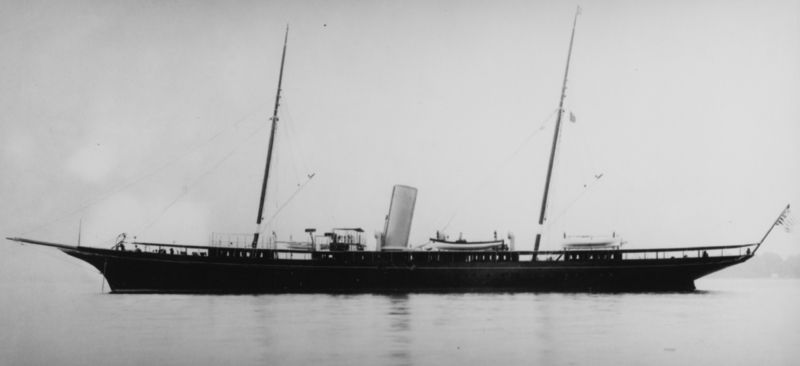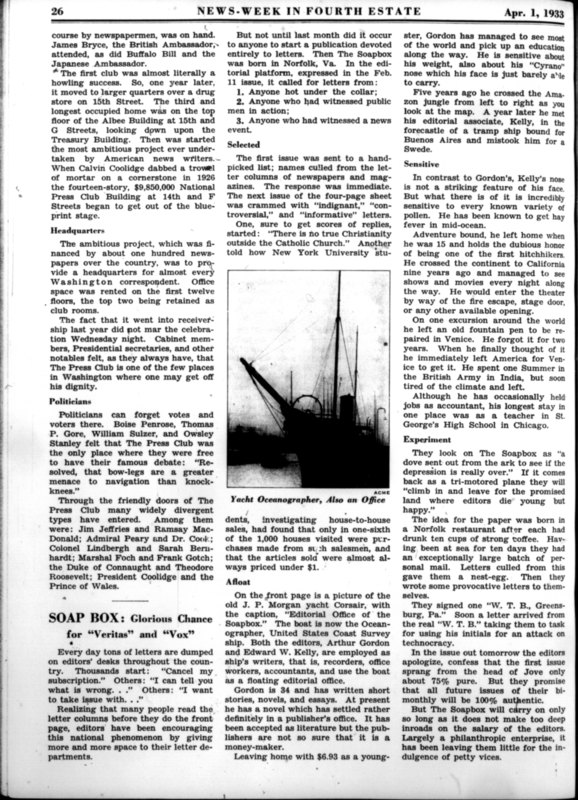Back to Sea
Ed Kelly graduated from Loyola in 1929. He spent time working as an accountant and as a teacher at St. George's High School in Chicago before being hired as an accountant/office worker/writer aboard the United States Coast Guard and Geodetic Survey (USC&GS) Oceanographer in May 1931. The ship was based out of Norfolk, Virginia.
The Oceanographer was originally built as luxury yacht Corsair III for banking mogul J. P. Morgan in 1899. The ship passed to his son upon his death in 1913, and it was used by the US Navy during World War I for patrol, as a troop transport, and to search for submarines off the coast of France. After the war, it returned to private use until J. P. Morgan, Jr. gave it to the USC&GS in 1930 under the stipulation that it be used as a survey ship. Its first survey was off the coast of Pensacola, Florida. During its time in the Gulf Coast, the ship frequented Port Arthur, Texas, according to letters to Ed Kelly from Rosemary Dugan, his girlfriend (and future wife) in Norfolk. During its career as a survey ship, the Oceanographer's crew discovered many underwater canyons between Georges Bank off Massachusetts and Cape Hatteras, North Carolina.
In August 1933, the Oceanographer became the only means of communication between Norfolk and other vessels in the midst of a major hurricane. Throughout the course of the storm, she handled radio traffic for the US Navy and for private corporations. The storm, known as the Chesapeake-Potomac hurricane, was one of the most damaging hurricanes ever to hit the eastern seaboard. In fact, it became the first hurricane eye to pass over Norfolk since 1821.
In 1942, the Oceanographer was transferred to the US Navy, which used the ship to chart portions of the South Pacific during World War II. Due to storm damage and age, the ship was decommissioned in 1944 and scrapped.
Aboard ship, Ed found a unique way to keep himself occupied when not working or writing letters to his girlfriend in Norfolk. He and Arthur Gordon, a fellow crewmember on the Oceanographer, decided to start The Soapbox, a publication dedicated entirely to "letters to the editor."
According to an April 1, 1933 Newsweek article, Ed and Arthur met around 1929 aboard a "tramp ship" to Buenos Aires. This mention of this trip is the only reference to Ed having taken a trip to South America in 1929, but it is possible that the author of the Newsweek article was mistaken and was instead referring to Kelly's time aboard the SS American Legion in 1925.
In their inaugural issue of February 11, 1933, they called for letters from:
- Anyone hot under the collar.
- Anyone who had witnessed public men in action.
- Anyone who had witnessed a news event.
To start off, they created their own audience using names from various letter columns of newspapers and magazines. How they got the addresses for those names is a mystery. For their first issue, they sorted through their personal backlog of mail, since they had been away at sea for ten days. They also wrote a few letters themselves under fake initials, although they admitted to this in their second issue, promising to only include real letters in the future. It is unclear how many issues the young men published, since they covered all expenses themselves.



